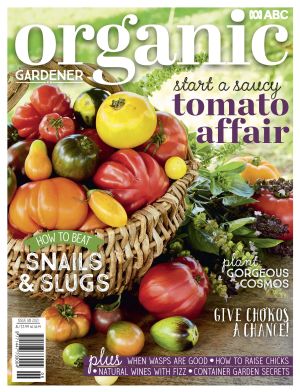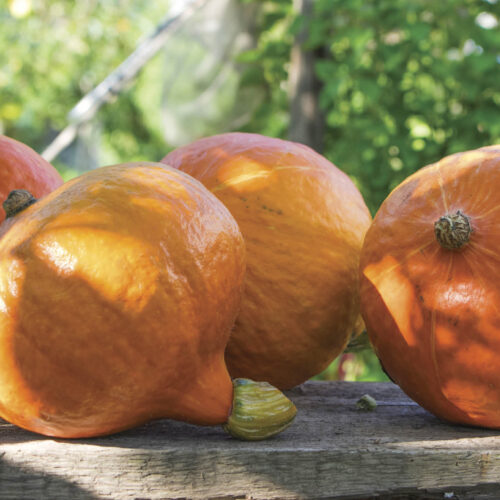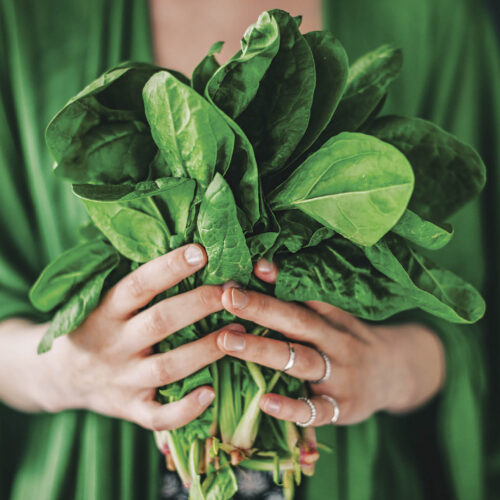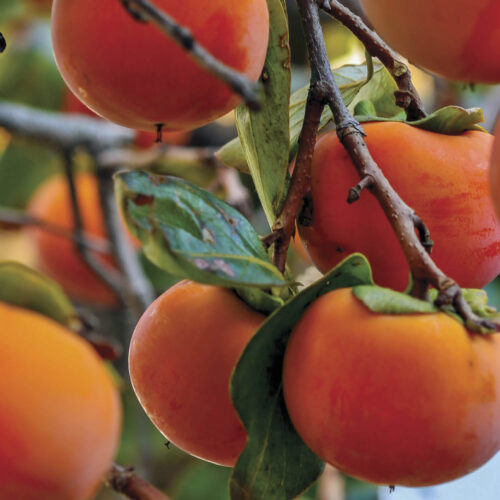Stop those snails and slugs!
2021-09-22T03:51:52+10:00
Penny Woodward has a constant challenge keeping snail and slugs from chomping away at her vegies! Learn how she does it.
In our gardens, snails and slugs that cause most of the damage are common garden snails (Cornu asperum), which have been in Australia for well over 120 years, and the various slug species, including brown and grey field slugs and leopard slugs. There are numerous other introduced species that may cause more problems into the future.
Snails and slugs love to feed on some of the most tender plants in the garden, putting their rasping tongues to good use eating newly emerged seedlings, especially of peas and beans. They also eat holes into the middle of leaves, enjoy young leaves on citrus trees and devour some fruit, including strawberries and tomatoes. In my garden, snails or slugs, completely stripped the emerging leaves on a young cherry tree. They also eat decaying organic matter.
They thrive in wet, rainy, cool, moist weather and usually only appear during the day if it’s raining. Usually in daylight hours they hide under pots, in clumps of thick-leafed plants, under boards and anywhere else it is damp and moist. They’re busiest time is at night, meaning you probably won’t see them and can only tell they’ve been busy because of their slimy trails or the damage they’ve done. Slugs will also bury themselves in the soil and hide under mulch. During dry times, snails retreat into their shells and make a cover called an epiphragm, over the entrance. In this state of hibernation they survive for months without water.
Control strategies
Search party
Fill a bucket with soapy water and search your garden. Check inside old pots and under planted pots, bits of wood on the soil, inside your wormfarm and around the compost heap, as well as in all your strappy-leaved plants. Drop any snails and slugs you find into the soapy water. Also go out in the first two hours after sunset with a torch and you’ll find them moving about – drop them into soapy water, too. This is a very effective way of controlling snails over time, but not so good for slugs. The soap kills the pests and any eggs they are carrying.
Biological control
Ducks, blue-tongue lizards, wild birds like magpies, kookaburras and mudlarks all love snails and slugs. I have wild ducks visiting from time to time and they head off hunting for their lunch or dinner before flying off further afield. Perhaps more surprisingly frogs, some beetles and centipedes eat these gastropods, too. So lizard, bird and frog-friendly gardens are the go.
Traps and baits
Place upturned pots, halved citrus skins, or a board on the soil (more likely to attract slugs), and each morning wander out with your trusty soapy water to collect. Fill bowls with beer, wine and other liquids containing yeast and place them amongst your vegies. They will attract and drown both slugs and snails but are particularly effective with slugs, especially if you do it over many weeks. A 5 per cent sugar solution in water also works for slugs.
Barriers
Many things can be used as barriers around young seedlings and tender plants. These include diatomaceous earth (bought from garden centres), coffee grounds, wood ash, sawdust and crushed eggshells – all of which will be effective for short periods and if it doesn’t rain heavily.
A more permanent barrier and my favourite way of protecting these plants, is copper tape. This tape is purchased in rolls from garden centres and hardware stores (or online) and has a sticky back. The copper gives a sort of electric shock to snails and slugs and they just fall off, refusing to cross the tape. I cut lengths of PVC downpipes and put the tape around the top of each. I have about 50 of these and deploy them every time I plant seedlings or sow seeds. Especially for peas and beans, where I leave them until the end of the season. For brassicas, cucurbits, corn and sunflowers, I place them but remove them once the seedling is well established. Copper tape is quite pricey but it lasts for years. You can also put this tape around big pots and garden beds, but make sure there is no alternative route for the snail or slug to get in.
My daughter had a parsley plant in a pot with copper tape around it, but the parsley kept getting eaten to the ground. She discovered the snails were climbing up a lavender plant in an adjacent raised bed and dive bombing onto the parsley to eat it!
Sprays
Make a coffee or wormwood tea mix and spray onto the soil and the leaves of plants. This acts to both repel and kill snails and slugs. Repeat after heavy rain.
Here’s one tip from Penny that might surprise you all:
Definitely don’t crush or stomp on snails as this releases any eggs they’re carrying into the soil beneath, where they’ll hatch out at a later date. Also, don’t feed them to your chooks. Our lovely chook expert Jessamy Miller says snails and slugs can be a vector for tapeworm and pass it on to chooks. But ducks love and are fine to eat snails and slugs as they are not susceptible to this tapeworm.
While on the topic of what not to do, don’t throw them over your fence into the neighbour’s yard or even out onto the road. In the first case it’s unneighbourly, in the second, unless they get run over, they’ll likely just come back. Research has shown they have a homing instinct and will travel up to 30 metres to find their way home. Mind you it is slow going – researchers have timed them travelling at only a metre per hour!
For more tips on pest control try these articles:
Organic pest control starts here
How good bugs work in an organic garden
Protecting your plants from pests
This article by Penny was originally published in our September/October 2021 issue (OG 128). Subscribe to ABC Organic Gardener magazine and discover more organic growing tips and ideas.







